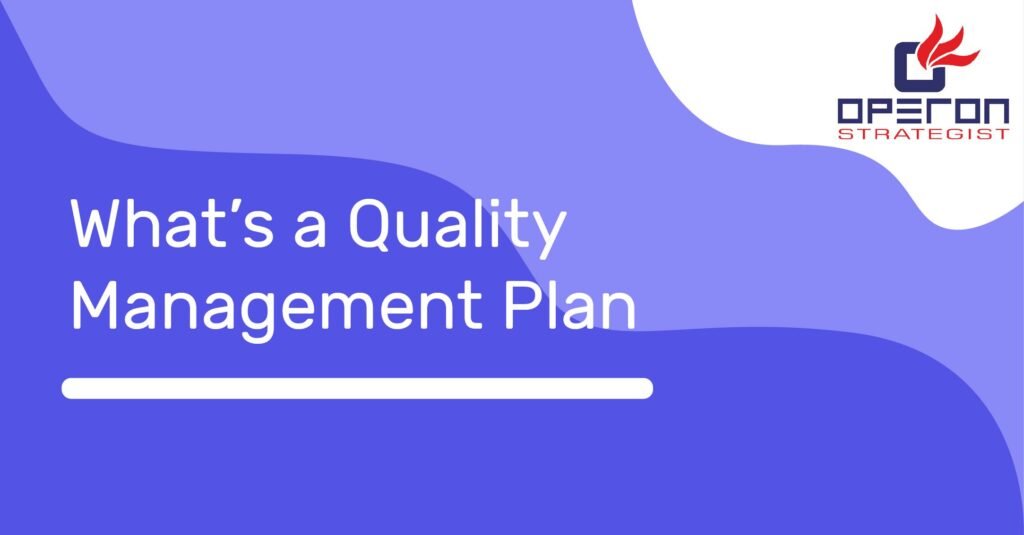The Quality Management Plan outlines the information needed to properly manage project quality from planning to delivery. It outlines a project’s quality policies, procedures, criteria, application areas, roles, duties, and authority. Quality refers to how well a project meets its requirements.
The Quality Management Plan describes how quality will be handled throughout the project’s lifecycle. Quality management planning establishes project-specific quality rules and procedures for project deliverables and processes, specifies accountability, and documents compliance. A contractor creates a quality management plan.
CDSCO Registration Consultant for Medical Devices:
Most organizations prioritize quality and cost when looking for a contract manufacturer.The reasons are evident.If your product does not fulfill the criterion of quality set by industry standards or the consumer, it will fail. Every product development project, whether it is a new product or an update to a current one, includes a Quality Management Plan
Looking For a Medical Device Regulatory Consultant?
Let’s have a word about your next project
What Is Quality Management?
Quality management is all about ensuring that everything you generate in a project adds value and is effectively maintained. It may be visible throughout all phases and roles of a project if properly applied.
Understanding quality management requires an understanding of what “quality” means. There are two main aspects of quality management:
Product Quality:
This is the actual, tangible thing. It may be the software you developed, the design prototypes created by your design team, or even the code documentation written by your devs.
Process Quality:
As project managers, we are responsible for developing and managing processes. However, in the context of quality management, we must also evaluate the quality of our processes and their impact on our team’s capacity to produce results. Quality in this context could be judged using metrics such as velocity.
Commonly Used QMS Types in the Medical Device Industry:
Why Is Quality Management Important?
Deliver a quality product:
When you practice quality management, the real results of your team’s efforts will be substantially better and more consistent. Your end users will be happier and more happy with what you were able to deliver.
Decrease overhead:
Quality is present at every step of the work process when quality management is integrated. This means there is less space for error because the process, plan, and alignment are stable and may include contingencies. There are fewer unknowns, leaving more room for your team to achieve excellent results.
Increase the Delivery Pace of Your Team:
Results are delivered at a more consistent pace, fostering confidence among your users and stakeholders. Your team earns a reputation for producing high-quality, consistent results and can be relied on to do so in the future.
Increase collaboration and reviews:
Because quality is an integral aspect of each phase and everyone’s function, all team members contribute to ensuring the project’s highest quality. Developers may use test-driven development. Stakeholders may contribute to the definition of acceptance criteria and acceptable quality. Test engineers are responsible for exploratory testing and identifying edge cases.
There Are Several Reasons to Create a Quality Management Plan and Insist on Seeing Your Contract Manufacturer’s Quality Plan:
- Directs conformance to the customer’s requirements.
- Verifies your own external and internal standards and procedures.
- Provides traceability.
- Provides objective evidence.
- Indicates where training is needed.
- Offers insight into the effectiveness of the organization’s quality management system
A Quality Management Plan, when properly implemented, protects the project, the product, the client, and the contract manufacturer/supplier by outlining all expectations in writing ahead of time.
Before proceeding, the Quality Management Plan’s components are discussed and agreed upon. The goal is to avoid negative surprises.
What to Include in Your Quality Management Plan
- Goals/objectives – This should include the product specifications, use, aesthetics, cycle time, materials, and cost.
- Process steps or procedures
- Distribution of responsibilities – Who does what and when?
- Standards – What are the practices and procedures that need to be applied?
- Testing requirements – When does testing take place? Who performs it, and where?
- Change/modifications documentation procedure – Gives you a way to track changes to the project or process.
- Quality process measurement – A way to measure the value of the quality document itself.
- Other actions as needed to meet the objectives.
Conclusion:
The Quality Management Plan is a strong framework that covers all areas of your project from beginning to end. It involves the participation of all project team roles and stakeholders; however, with the template provided in this article, you may immediately get started on your robust plan. Once implemented, you will be able to develop a strong focus on quality across your team’s work, which will be reflected in the results of your project.
Seeking CDSCO Medical Device License Help?
Operon Strategist simplifies the CDSCO medical device license process with our expert technical team, providing excellent assistance, timely responses, and affordable fees. As the best regulatory consultant, we offer comprehensive medical device consulting services. Contact us today for reliable and efficient support.
- adminhttps://operonstrategist.com/author/admin-2/
- adminhttps://operonstrategist.com/author/admin-2/
- adminhttps://operonstrategist.com/author/admin-2/
- adminhttps://operonstrategist.com/author/admin-2/



